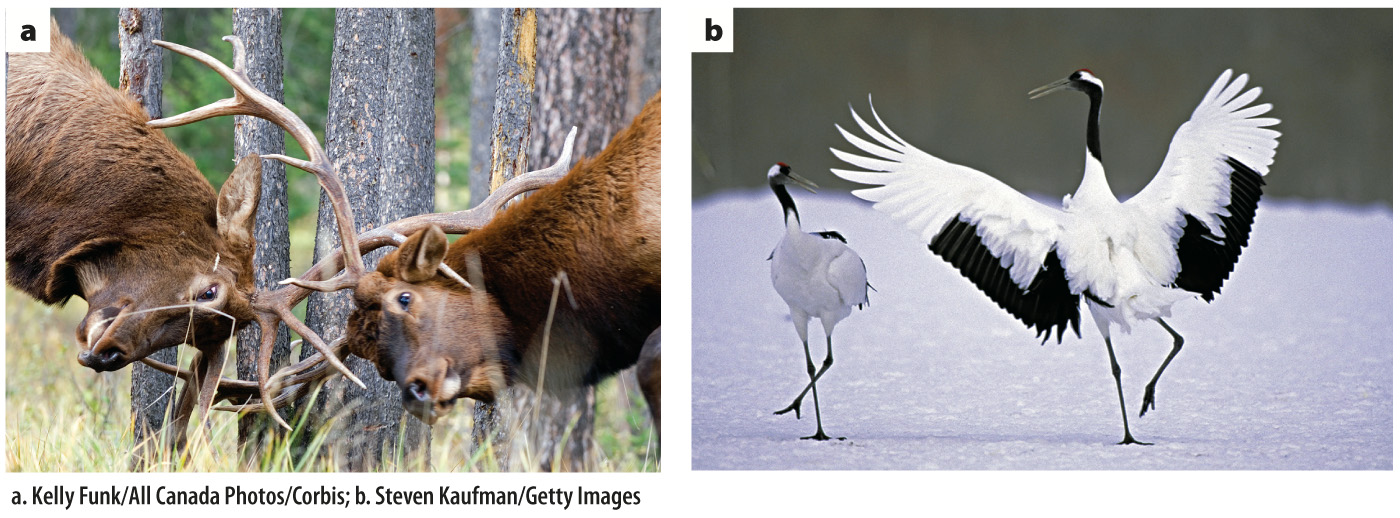Sexual selection increases an individual’s reproductive success.
Initially, Darwin was puzzled by features of organisms that seemed to reduce an individual’s chances of survival. In a letter a few months after the publication of The Origin, he wrote, “The sight of a feather in a peacock’s tail, whenever I gaze at it, makes me sick!” The tail is metabolically expensive to produce; it is an advertisement to potential predators; and it is an encumbrance in any attempt to escape a predator. How could such a feature evolve under natural selection?
In his 1871 book, The Descent of Man, and Selection in Relation to Sex, Darwin introduced a solution to this problem. Natural selection is indeed acting to reduce the showiness and size of the peacock’s tail, but another form of selection, sexual selection, is acting in the opposite direction. Sexual selection promotes traits that increase an individual’s access to reproductive opportunities.
Darwin recognized that this could occur in two different ways (Fig. 21.12). In one form of sexual selection, members of one sex (usually the males) compete with one another for access to the other sex (usually the females). This form is called intrasexual selection since it focuses on interactions between individuals of one sex. Because competition typically occurs among males, it is in males that we see physical traits such as large size and horns and other elaborate weaponry, as well as fighting ability. Larger, more powerful males tend to win more fights, hold larger territories, and have access to more females.

438
Darwin also recognized a second form of sexual selection. Here, males (typically) do not fight with one another, but instead compete for the attention of the female with bright colors or advertisement displays. In this case, females choose their mates. This form of selection is called intersexual selection since it focuses on interactions between females and males. The peacock’s tail is thought to be the product of intersexual selection: Its evolution has been driven by a female preference for ever-
Quick Check 4 Sexual selection tends to cause bigger size, more elaborate weaponry, or brighter colors in males. Is this an example of stabilizing, directional, or disruptive selection?
Quick Check 4 Answer
Sexual selection for bigger size, more elaborate weaponry, or brighter colors in males is an example of directional selection.